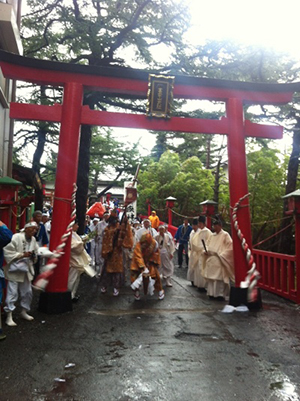History and Culture of Mt. Fuji
- Since old times, Mt. Fuji has been a sacred mountain and worshipped by people. In the neighborhood of Mt. Fuji, there are many historic and cultural heritages associated with Mt Fuji worship called Fujiko, which flourished in the Edo period.
- Furthermore, the graceful shape and majestic view of Mt. Fuji has inspired various works of art such as poems, paintings and literature and been admired since old times.
- Mt. Fuji is designated as a Special Place of Scenic Beauty in order to protect the beauty that gave birth to such culture.
UNESCO World Heritage
"Fujisan" sacred place and source of artistic inspiration
Mt.Fuji was designated as a World Heritage Site on 22 June 2013.
-
(English, Français, 筒体中文,繁體中文,한국어)




